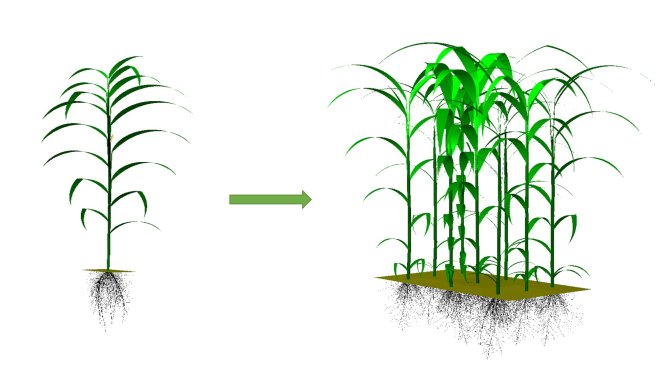
Project
Improve maize nitrogen use efficiency through functional structural plant modelling
This project is to explore plant traits and plastic responses impacts on plant and crop performance to improve nitrogen use efficiency (NUE) and maintain yield in order to improve the current mono-cropping system to a more sustainable agricultural system in the future in China.
Background
Nitrogen is one of the essential nutrients for plant growth, required for many physiological processes in plants. However, overusing nitrogen fertilizer causes many environmental problems. More than 60% of the applied nitrogen is lost through leaching, surface run-off, denitrification and volatilization. Breeding for new cultivars with increased NUE is one of the contributing potential options.
China is especially suffering from overusing of nitrogen fertilizers in agriculture systems and has a high demand of food. Therefore, one of the major breeding targets in China is increasing crop productivity while reducing nitrogen fertilization. This is especially relevant for maize, one of the major crops and an important feed and food source in China.
Since NUE and yield are complex traits, identification of a limited number of regulatory components is not enough to understand their variation. Here a plant modelling approach is adopted, called functional-structural plant (FSP) modelling that simulates individual plants, their growth, physiological functioning and 3D architecture, growing in a crop stand and competing with each other for resources.
Project description
We first integrate the plant nitrogen sink-source relationship, nitrogen uptake mechanisms and major soil nitrogen flows to a existing whole plant FSP model. We then parameterize and validate the model with field data to identify and quantify the contributions of potentially relevant traits (including physiological, architectural, developmental and morphological traits ) to NUE.
Secondly, we quantify the important plastic responses in term of nitrogen gradients through a greenhouse experiment. We then integrate identified response curves into the FSP model to explore and quantify the contributions of plastic responses at both plant and crop levels on NUE through the FSP model.

After that, the impact of the interaction between genotypic traits and the important plastic responses contribute to NUE under various planting densities plan to be further explored through the developed FSP model.
Finally, the simplified whole plant FSP model plan to be used to explore the potential contribution to a future sustainable cropping system with mixed genotypes to improved NUE and maintained yield level.